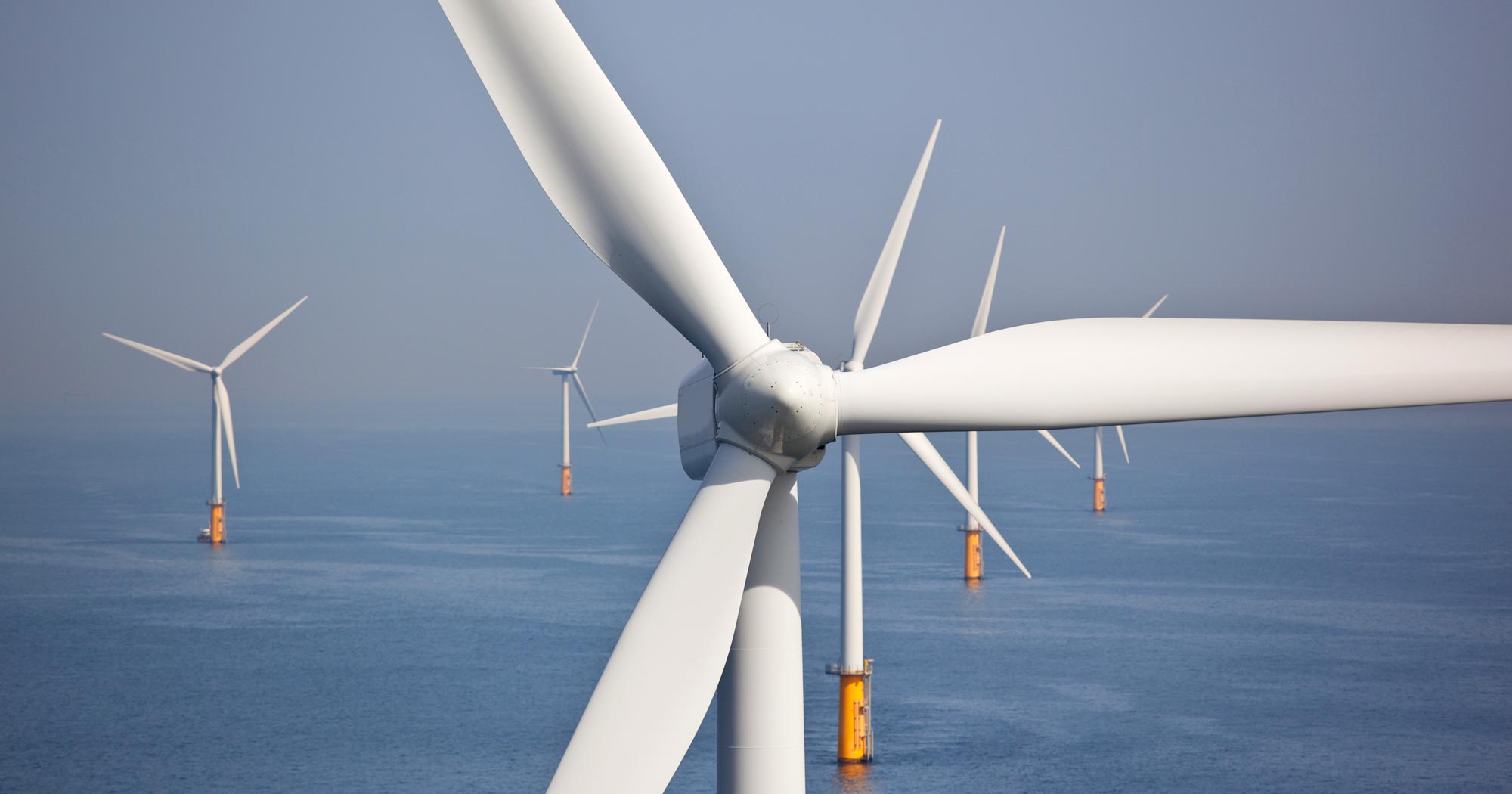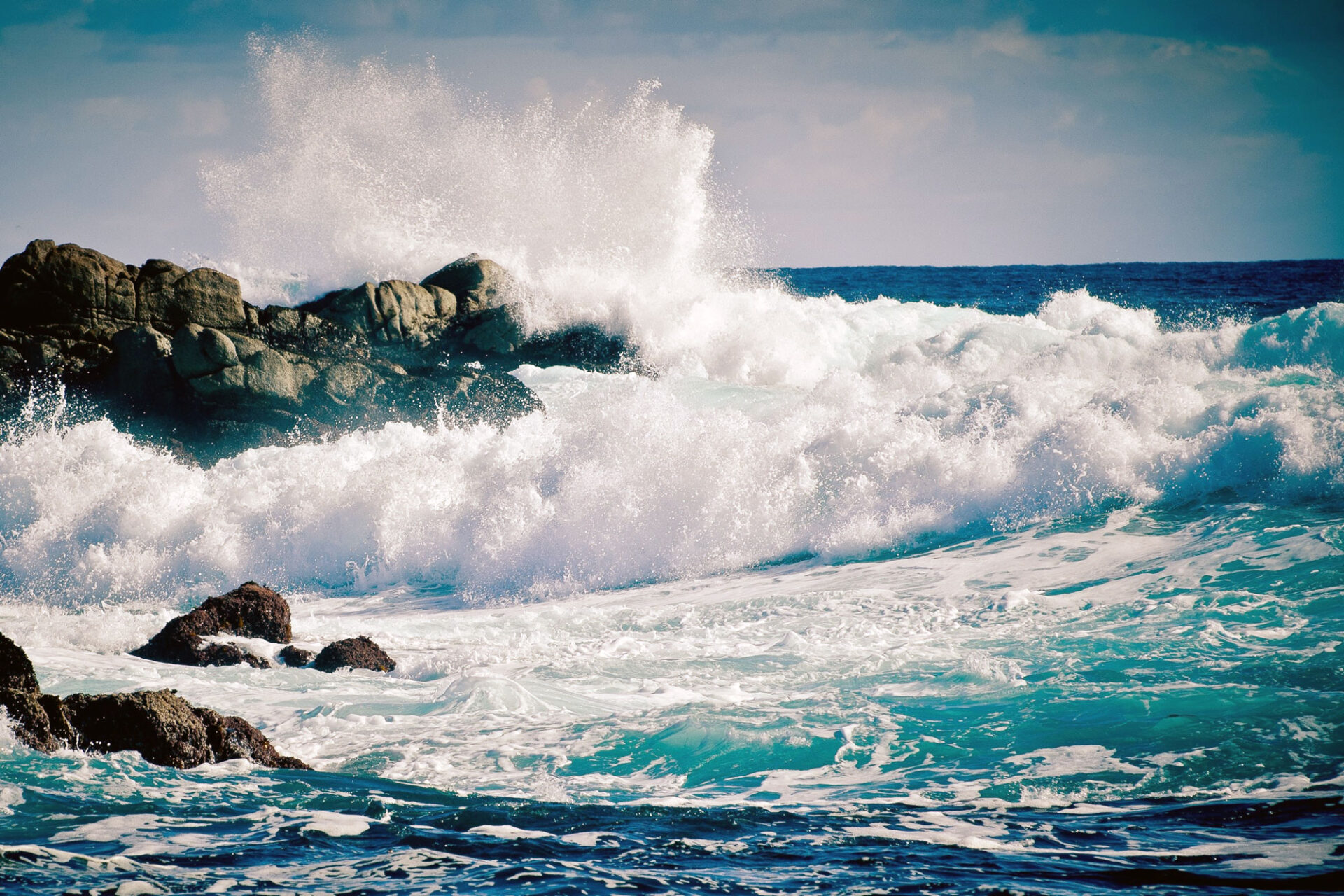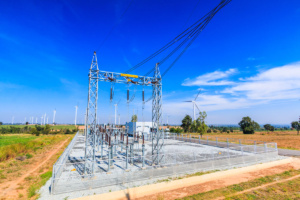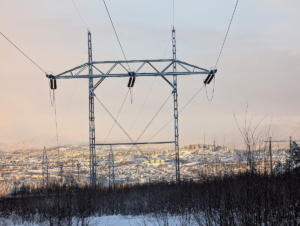Wave energy represents an exciting opportunity for Norway. Not only can it complement other forms of offshore renewable energy, such as wind power, but it is also an incredibly powerful source of energy in its own right. While the technology for harnessing this energy has not yet reached commercialisation, Norway’s offshore expertise and extensive coastline position the country perfectly to realise wave energy’s role in achieving a successful energy transition for Norway, Europe and the world.
Waves as untapped potential
Most waves are created when wind blows across the water’s surface, transferring energy from the wind to the water. The waves then travel across the ocean, carrying this energy with them. Wave energy converters (WECs) absorb the energy from the water’s movement and transform it into usable energy using a power take-off (PTO).
According to the 2022 edition of Energi21, Norway’s strategy for the research, development and commercialisation of new climate-friendly technologies, developing 20% of wave energy’s technical potential in Norway could produce approximately 12-30 TWh of electricity per year. In 2022, the average Norwegian household used approximately 15,000 kWh of electricity. This means that waves could theoretically produce sufficient power to supply 30-80% of Norwegian households.
WECs have undergone significant development in recent years, and are proven to be able to both produce and transmit power to the grid. However, the technology has still not reached commercialisation, and is currently only producing 1 MW of power globally – which is far from the 29,500 TWh per year that the International Panel on Climate Change (IPCC) estimated that wave energy was capable of producing in its 2011 report on Ocean Energy.
Ironically, the thing that makes waves such a rich energy source is also what makes them so challenging to harness: the power of the ocean itself.
The ocean is an unforgiving environment for any technology to operate in
As with any technology, ensuring reliability is a key for a WEC’s success. This means that there needs to be a high level of certainty that the technology will operate as it should for the time it has been designed for.
The ocean is an unforgiving environment for any technology to operate in, and WEC developers need to anticipate and mitigate the effects of being in contact with salt water and subjected to a variety of forces for a long period of time, which might lead to mechanical and electrical failures and component degradation.
In addition to the long-term wear and tear, the ocean can also produce extreme forces in a very short time frame. Survivability, the ability of WECs to withstand the biggest waves without being destroyed – and preferably still be able to produce power afterwards – has long been a main obstacle to WEC commercialisation.
Securing the funding for wave energy research and development has also proven to be difficult. In this aspect, WECs are often subject to a classic “chicken or the egg” dilemma; the technology has not been commercialised, which means it isn’t as competitive as other technologies, so funding is difficult to obtain. Without funding, there is little R&D activity, so the technology does not progress to commercialisation.
These challenges are undeniably significant – but they are not insurmountable, and Norway has many characteristics that make it an ideal location for both addressing these issues and doing so quickly and at a reduced cost.
Norway has extensive offshore expertise that could be applied to wave energy
As a country, Norway has garnered extensive experience in offshore and maritime technologies. For example, offshore wind turbines face many of the same challenges as WECs in terms of operating reliably in ocean environments while still generating and transmitting power to the grid. As such, lessons learned from offshore wind’s technological development could be applied to address similar issues for wave energy.
Co-locating WECs and floating or bottom-fixed wind turbines would further reduce deployment and operational costs, as the two technologies could share infrastructure for power production, power transmission and maintenance.
In return, wave energy can complement wind energy by helping to safeguard the security of supply – that sufficient power is supplied to the grid when it is needed.

Wind is a form of variable renewable energy (VRE), as the amount of power it produces can fluctuate significantly, depending on the weather, time of day or season. Waves are also a form of VRE; however, the nature of the ocean is that it is always moving, and as such, waves present the possibility of a more constant form of energy generation. Furthermore, we have incredibly accurate wave forecasting tools, which could enable a WEC’s expected power output to be planned well in advance.
Therefore, wave energy could compensate for days when there is a lack of wind, and contribute to establishing a predictable and reliable offshore energy supply.
Norway’s environment is naturally suitable for wave energy research and testing
As with any technology, research is crucial for WEC development, not only to improve the WEC’s chances of success when it is deployed, but also to build investors’ confidence. Test centres containing dry and wet testing facilities are key arenas for this research to take place.
For example, in 2022, construction started on the upcoming Norwegian Ocean Technology Centre. The Centre will contain dry and wet laboratories, which will be used to develop maritime technologies to support Norway’s green transition, including offshore wind, sea transport and aquaculture. These laboratories are ideal for also developing WECs, and wave energy’s potential to contribute to Norway’s sustainability goals means it aligns well with the Centre’s ethos.
However, the ultimate test for a WEC is to deploy it in an operational environment – the ocean.
Norway’s coastline is one of the longest in the world, characterised by numerous islands and inlets. As a result, there is both a lot of choice in terms of potential deployment sites and a variety of wave conditions for testing, from the monstrous waves on the Norwegian and North Seas to the gentler waves in the fjords.
Easy access to different waves presents Norway with the unique opportunity to advance WECs to commercialisation at a lower cost in terms of money, time and resources.
All technologies require research and investment to reach commercialisation
While Norway is clearly at an advantage, all this development would still require an investment. Yet, convincing funding organisations that a technology is worth the investment is not a unique problem for wave energy. All technologies were immature once. It is only due to dedicated research and investment efforts that they advance to commercialisation, and the associated costs reduce as a result.
Again, we can use offshore wind as an example. A national strategy for establishing offshore wind energy in Norway was first mentioned in 2007, in Report to the Storting no. 34, 2006-2007:
“Two important driving forces for a strengthened Norwegian effort on offshore wind turbines are a) a large potential for Norwegian production of renewable power on the Norwegian continental shelf, and b) a large international market where Norwegian-based technology can be the winner.”
Thirteen years later, and the Norwegian government has set a target for offshore wind to produce 30 GW of power per year by 2040, and the first floating offshore wind sites have been allocated, with others planned
The arguments for creating a national strategy for offshore wind could also apply to wave energy. The importance of a willingness and ability to invest cannot be underestimated for a technology’s success.
Wave energy: an exciting opportunity for Norway
Wave energy undoubtedly has challenges that need to be addressed. However, Norway is at a significant advantage when it comes to solving them and making wave energy a reality. Far from wishful thinking, Norway should view wave energy as an exciting opportunity, not only to contribute to its own zero-emission energy goals, but also to secure the Norwegian Continental Shelf’s position as a reliable provider of renewable energy. In our opinion, the benefits that wave energy would bring are absolutely worthy of investment.
A version of this article, “Norge kan lede an innen bølgekraft” (“Norway can lead the way for wave energy”), was published in Dagens Næringsliv on 19 July 2024 (in Norwegian).










Comments
The technology of “Aquaculture Wind Wave Energy, AWWE, can be the best way in future to harvesting energy from the oceans.
Hybrid technology will share costs, and overtopping WECs at floating rigs shows LCOE at € 0,05/kWh.
This news item in SINTEF newsletter mentions about the typical difficulties of wave energy conversion for electricity generation. I have been doing research on this topic over some years now and come up with a solution to avoid implementation challenges.
(1) Firstly, I have designed and analyzed the power absorption and reliability in detail of a point absorber type convertor in which all the mechanical and electrical components (generator), except the buoy, are mounted above sea level in the nearshore. This method has a number of advantages such as there is no necessity for protective shielding or undersea power cables. All the modules including the generator are protected from any salt sprays. Installation and maintenance would be simpler as there is no need for undersea work or long boat trips to offshore.
[These advantages are described in detail in my very recent publication in Elsevier Energy Reports. This paper also provides semi-theoretical analysis of power absorption using standard wave models such as JONSWAP and TMA, and shows how the power absorption is increased optimally by reshaping the frequency response of the device. Please have a look through:
“A top-mounted chain driven bidirectional point absorber type wave energy convertor”, (2024), Energy Reports, Elsevier, p. 1360-1384, December
DOI link: https://doi.org/10.1016/j.egyr.2024.07.014
(2) I have previously done research on wave concentration in the nearshore. This approach too has many advantages such as providing a platform for top mounting point absorber type wave energy convertors and protecting them from oblique waves and hazardous storms. Please have a look through for more details and semi-theoretical analysis of energy enhancements:
“On the placement of a wave manipulator suitable for energy harnessing in the nearshore”, (2022), Cogent Engineering, Taylor and Francis, Vol. 9, Issue 1, September.
DOI: https://doi.org/10.1080/23311916.2022.2124636
Please contact me if you need any further details.